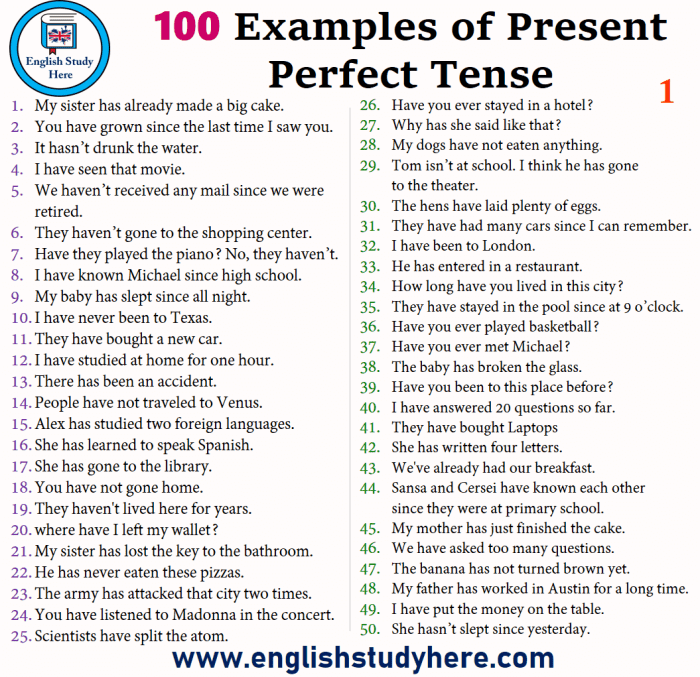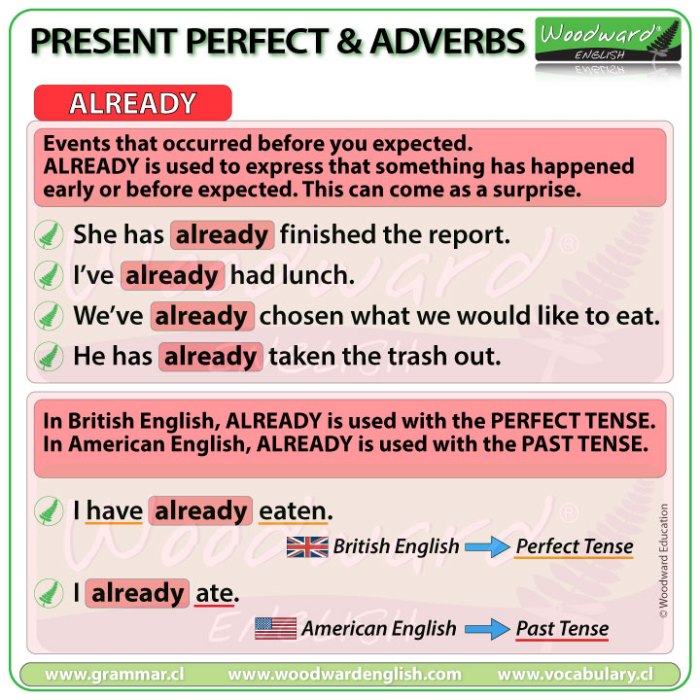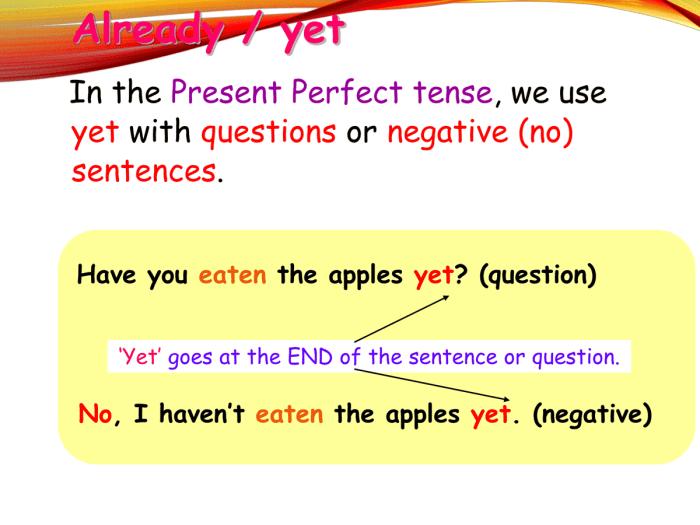Oraciones con Already Present Perfect introduce an intriguing grammatical concept that adds depth and precision to our understanding of past actions and their impact on the present. This guide delves into the intricacies of this tense, exploring its formation, usage, and advanced applications.
The already present perfect tense captures the completion of an action or event prior to the present moment, often emphasizing its relevance or impact on the present situation. Its distinct structure and usage patterns set it apart from other perfect tenses, offering unique insights into the interplay between past and present.
Already Present Perfect Tense: Oraciones Con Already Present Perfect

The already present perfect tense is a grammatical construction in English used to describe an action or event that began in the past and continues up to the present moment or has just been completed. It is formed using the auxiliary verb “have” or “has” followed by the past participle of the main verb.
Form and Structure of Already Present Perfect Tense
The already present perfect tense is formed by using the following structure:
Subject + have/has + past participle of the main verb + already
The table below provides examples of the structure of the already present perfect tense:
| Subject | Have/Has | Past Participle | Already |
|---|---|---|---|
| I | have | finished | already |
| You | have | completed | already |
| He/She/It | has | written | already |
| We | have | studied | already |
| You (plural) | have | decided | already |
| They | have | arrived | already |
Usage of Already Present Perfect Tense, Oraciones con already present perfect
The already present perfect tense is used in several common situations:
- To describe an action or event that began in the past and continues up to the present moment:
- To describe an action or event that has just been completed:
- To emphasize the recent completion of an action or event:
I have already finished my homework.
She has already arrived at the airport.
I have already eaten breakfast.
Comparison with Simple Present Perfect Tense
The already present perfect tense is similar to the simple present perfect tense, but there are subtle differences in meaning and emphasis:
- The already present perfect tense emphasizes the recent completion of an action or event, while the simple present perfect tense does not.
- The already present perfect tense is often used with adverbs of time such as “just,” “recently,” and “already,” while the simple present perfect tense is not.
The following examples illustrate the contrast between the already present perfect tense and the simple present perfect tense:
I have already finished my homework. (emphasizes the recent completion of the action)
I have finished my homework. (does not emphasize the recent completion of the action)
She has already arrived at the airport. (emphasizes the recent completion of the action)
She has arrived at the airport. (does not emphasize the recent completion of the action)
Advanced Applications of Already Present Perfect Tense
The already present perfect tense can be used effectively in literary and academic writing:
- To enhance storytelling by creating a sense of immediacy and urgency:
- To convey specific perspectives or interpretations:
“I have already seen the future, and it is bright.”
“The world has already changed, and we must adapt.”
FAQ Resource
What is the purpose of oraciones con already present perfect?
Oraciones con already present perfect highlight the completion of an action or event before the present moment, emphasizing its present relevance or impact.
How is the already present perfect tense formed?
The already present perfect tense is formed by combining the auxiliary verb “haber” in the present tense with the past participle of the main verb.
When should I use the already present perfect tense?
The already present perfect tense is used when the speaker wants to convey that an action or event was completed before the present moment and has a present relevance or impact.

